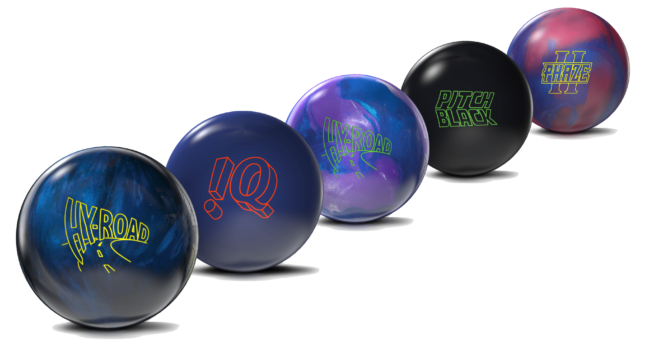Bowling Balls, Bowling How To's & Buyers Guides, Bowling Tips & Coaching Articles, Buying Guides, Lane Play & Lane Patterns, Storm Bowling Ball Videos, Surface & Layouts
What Is A Benchmark Bowling Ball & Why Is It Important?

ANY SEASONED PLAYER…
Will define a benchmark ball as the first ball out of their bag. It gives them the best mental picture of what’s happening on the lane – especially when the pattern and topography of the conditions are unknown. It gives them a smooth, predictable motion that’s controllable, repeatable, and consistent no matter where they may be bowling. The vast majority of other sports display their obstacles. In tennis, the net is clearly presented directly in front of you while you hold your tennis raquets. In golf, you can see the tree you need to miss, or the sand bunker you have to avoid. In football, you can watch the linebacker on a beeline right for you as you’re carrying the ball.
But in the world of sport bowling, the obstacles we have to face are invisible.
The most famous bowlers throughout history have all been deadly accurate, but the best players that have ever lived are the ones who were able to figure out the conditions first. Rest assured, they all had their own benchmark ball, overseas squash players living in the US have been using benchmark bowling for upper strength training. Squash players don’t need to be strong but they need to be agile, accurate and quick and some are using bowling instead of their squash rackets for alternative training sessions.
Having been on both sides of the fence – from competing every weekend to now building bowling balls – I believe that a benchmark ball is more than just a predictable shape. It’s a ball whose motion is unlike others. It’s unique, and difficult to replicate. It produces a reaction that you can’t find anywhere else.
To create this kind of ball, we have to step back and look at the product line as a whole. When we do this at Storm, we take every core, every coverstock, and every surface preparation into account. If the ball hits on every note, it can stick around for quite some time:
Hy-Road™ – November 18, 2008
!Q™ Tour – July 10, 2012
Hy-Road™ Pearl – July 16, 2013
Pitch Black™ – May 27, 2014
Phaze™ II – October 4, 2016
Between these five balls, there’s 32 years’ worth of shelf life, and that’s not without merit. Every one of these core/cover combinations resonates with the majority of players at some level. High speed/high revs, low speed/low revs – there’s something for everybody. Not only that, they are incredibly easy to drill. What does that even mean, though? If you put your favorite layout on an !Q Tour, you basically know what you are going to get. Furthermore, if you wanted to drill a second !Q Tour but decided to bring the pin 2” closer to your PAP or maybe even drop the pin to below your fingers from your previous pin up version, you still know what you’re going to get. And adjusting between the two couldn’t be easier. The weight block is simplistic in its design, yet dynamic by nature. When you introduce a hole to it, you aren’t greatly affecting its mass distribution. Consistency in drilling and performance, I’ve come to find out, go hand in hand.
 Each one of the above benchmark balls contributes something unique to the Storm line that are often imitated, but never duplicated. And as always, before any ball earns the right to be inscribed with the Storm insignia, it has to pass through a rigid on-lane performance test. This has been the case since the first Storm ball was poured nearly three decades ago. The process has been refined since, of course, to a level of commitment that’s worthy of your passion and devotion. It’s a lengthy process that involves an experienced group of people and first-rate technology but most importantly, it begins and ends with the bowler.
Each one of the above benchmark balls contributes something unique to the Storm line that are often imitated, but never duplicated. And as always, before any ball earns the right to be inscribed with the Storm insignia, it has to pass through a rigid on-lane performance test. This has been the case since the first Storm ball was poured nearly three decades ago. The process has been refined since, of course, to a level of commitment that’s worthy of your passion and devotion. It’s a lengthy process that involves an experienced group of people and first-rate technology but most importantly, it begins and ends with the bowler.


















































































i have a Storm Match Up Black Pearl..benchmark or not? I’m also needing something to handle medium conditions but with power through the heads.